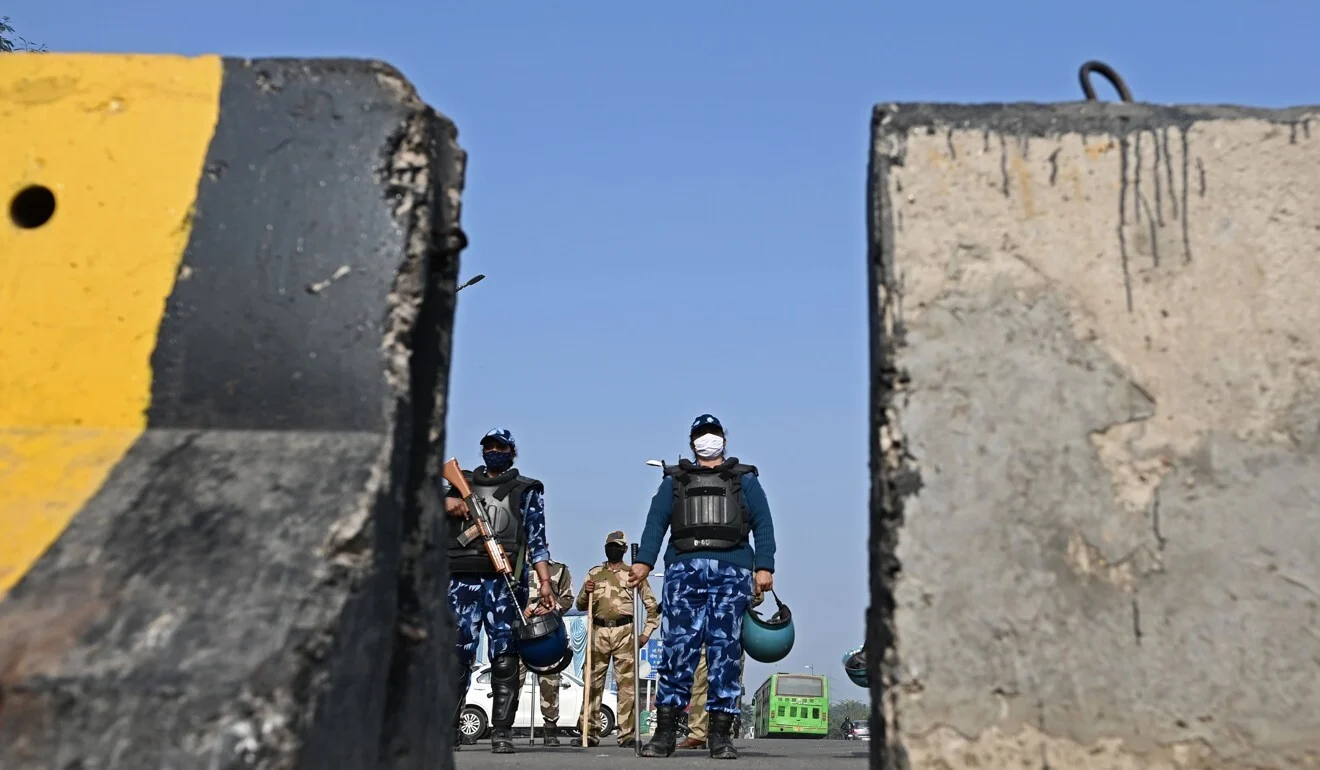Farmers’ ‘Delhi Chalo’ Protest Sparks Dramatic Clashes and Legal Fireworks
“Farmers’ Protest Escalates: Clashes and Legal Actions Unfold”
The farmers’ protest saga in India has taken a riveting turn today, as the ‘Delhi Chalo’ march transforms into a battleground of ideals and authority. Amidst a backdrop of heavy barricades and heightened security, scenes of confrontation erupted at the Punjab-Haryana border, underscoring the deep-seated frustrations of the agricultural community.
In a dramatic escalation, the Haryana Police clashed with a group of spirited youth who, determined to push forward the farmers’ cause, attempted to breach the formidable barricades at the Shambhu border in Ambala. Tear gas filled the air as protestors clashed with law enforcement, each side unyielding in their resolve.
But the drama didn’t stop there. The Punjab and Haryana High Court thrust itself into the fray, issuing notices to the central and state governments in response to petitions both demanding a halt to obstructive actions against the protest and seeking punishment for those blocking highways. Legal fireworks add another layer of intrigue to an already electric atmosphere.
In the midst of the chaos, political heavyweights like Mamata Banerjee voiced their condemnation of the tear gas tactics, questioning the government’s handling of the farmers’ legitimate grievances. Meanwhile, Delhi Police Commissioner Sanjay Arora’s inspection of security arrangements at the Tikri border highlights the tense anticipation gripping the national capital.
The Chief Justice of India, DY Chandrachud, offered a glimmer of relief to lawyers caught in the traffic snarls caused by the protests, promising accommodation amidst the chaos. Traffic jams have become an unforeseen consequence of the farmers’ impassioned march, adding a layer of unpredictability to an already volatile situation.
Amidst the chaos, farmer leaders continue to rally their supporters, amplifying their demands for a law guaranteeing Minimum Support Price (MSP) and the implementation of the Swaminathan Committee’s recommendations. The ‘Delhi Chalo’ protest, once a peaceful expression of dissent, has now become a symbol of defiance against perceived injustice.
As the nation watches with bated breath, the stage is set for a showdown of ideologies and wills. The farmers’ protest has evolved into a captivating narrative of resilience and determination, with each twist and turn capturing the attention of the nation. In this high-stakes drama, the fate of India’s agricultural landscape hangs in the balance, waiting for a resolution that could redefine the course of history.



